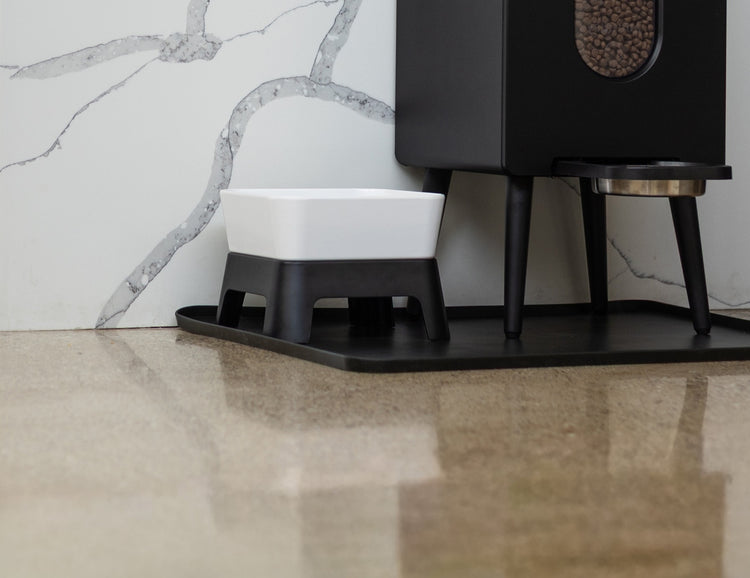Comprehensive Guide to Helping Your Dog Lose Weight
- Houndsy
Table of Contents
- Introduction
- Understanding the Importance of a Healthy Weight
- Step 1: Consult Your Veterinarian
- Step 2: Create a Feeding Plan
- Step 3: Increase Physical Activity
- Step 4: Monitor Progress
- Step 5: Maintain the Healthy Weight
- Conclusion
- FAQ Section
Introduction
Did you know that more than 50% of dogs in the United States are considered overweight or obese? This startling statistic highlights a growing concern among pet owners—a concern that can significantly impact our beloved companions' health and quality of life. As responsible pet parents, we want our furry friends to lead healthy, active lives. However, managing a dog's weight can be a daunting task.
In this blog post, we will explore effective strategies on how to help your dog lose weight, focusing on practical steps that pet owners can take to foster a healthier lifestyle for their dogs. We will discuss the importance of veterinary guidance, the role of nutrition, the benefits of exercise, and how to monitor your dog's progress throughout their weight loss journey.
By the end of this guide, you will have a comprehensive understanding of how to implement a successful weight loss plan for your dog, ensuring they remain healthy and happy for years to come. So, let’s dive in and reflect on your own pet's feeding routine—how can we make it more effective for weight management?
Understanding the Importance of a Healthy Weight
Maintaining a healthy weight is crucial for your dog's overall well-being. Dogs that are overweight or obese face an increased risk of developing serious health issues, including diabetes, arthritis, high blood pressure, and certain types of cancer. Studies have shown that dogs at a healthy weight tend to live longer, more active lives compared to their overweight counterparts.
By helping your dog shed a few pounds, not only are you enhancing their quality of life, but you are also potentially extending their lifespan. This journey to a healthier weight begins with understanding the basics of canine nutrition and energy balance.
The Science of Weight Loss
The fundamental principle behind weight loss for dogs mirrors that of humans: consuming fewer calories than are expended leads to weight loss. However, it's essential to remember that not all calories are created equal.
A dog's dietary needs vary based on factors such as age, breed, size, and activity level. Therefore, simply reducing food intake without understanding your dog's specific requirements may lead to nutritional deficiencies or other health concerns.
Step 1: Consult Your Veterinarian
Before embarking on a weight loss journey for your dog, it is crucial to consult a veterinarian. A healthcare professional can help identify any underlying health issues contributing to your dog's weight problem and craft a personalized weight loss plan tailored to your dog's unique needs.
Assessing Health and Body Condition
Your veterinarian will conduct a thorough examination and may ask questions about your dog's diet, activity level, and overall health. They will assess your dog's body condition score (BCS), which helps determine if your dog is overweight, underweight, or at an ideal weight.
If your dog is deemed overweight, your veterinarian can provide guidance on setting realistic weight loss goals and recommend suitable diet options, including veterinary therapeutic weight-loss foods designed to promote healthy weight management.
Step 2: Create a Feeding Plan
Once you have a plan in place with your veterinarian, it’s time to focus on your dog's diet as part of their weight loss strategy. Here, we will cover how to manage portions, select appropriate foods, and consider the role of treats.
Measuring Food Portions
Accurate portion control is vital for successful weight management. Use a kitchen scale or measuring cup to ensure you are feeding the right amount of food as per your veterinarian's recommendations. It’s easy to overfeed, especially if you rely solely on rough estimates or feeding guidelines on the food label.
Selecting the Right Food
Opt for high-quality, low-calorie dog food that is specifically formulated for weight loss. These foods are often lower in fat and higher in fiber, which can help your dog feel full without consuming excess calories. Always consult your veterinarian about the best dietary options for your dog's specific health needs.
Treats: Finding a Balance
While it’s essential to limit treats during a weight loss plan, it doesn’t mean you have to eliminate them entirely. If you want to reward your dog, consider using low-calorie treats or even healthy options like small pieces of fruits and vegetables. Remember to account for treats in your dog's daily caloric intake, adhering to the general rule that treats should make up no more than 10% of their total calorie consumption.
Step 3: Increase Physical Activity
In conjunction with a healthy diet, regular exercise is key to helping your dog lose weight. Incorporating more activity into your dog's daily routine can significantly enhance their weight loss efforts while also improving their overall well-being.
Types of Exercise
Different breeds and ages may require varying types and intensities of exercise. Start with simple activities such as:
- Daily Walks: Aim for at least 30 minutes of brisk walking each day. Walking not only helps burn calories but also provides mental stimulation for your dog.
- Playtime: Engage in interactive games like fetch, tug-of-war, or hide-and-seek to keep your dog entertained while promoting physical activity.
- Canine Sports: If you’re looking for a fun way to exercise together, consider exploring canine sports such as agility training, flyball, or obedience classes.
Gradual Increase in Activity
If your dog is significantly overweight, it's crucial to gradually increase their activity level. Starting with short walks and slowly building up to longer, more vigorous exercise sessions will help avoid injury and ensure that your dog remains comfortable throughout the process.
Step 4: Monitor Progress
Keeping track of your dog’s weight loss journey is essential for ensuring that your plan remains effective. Regular monitoring allows you to make necessary adjustments to their diet and exercise regimen.
Weigh Your Dog Regularly
Weigh your dog at least once a week, noting their weight in a journal. This practice will help you track progress and identify any plateaus or setbacks. If your dog is not losing weight as expected, consult your veterinarian to reassess their dietary and exercise plans.
Celebrate Milestones
Weight loss is a journey, and celebrating milestones—no matter how small—can help keep both you and your dog motivated. Recognizing your dog’s accomplishments will reinforce their progress and foster a positive atmosphere around their weight loss efforts.
Step 5: Maintain the Healthy Weight
Once your dog has reached their target weight, it’s important to shift your focus to maintaining that weight. This will require ongoing commitment to their diet and exercise regimen.
Transitioning to Maintenance
After achieving the desired weight, consult your veterinarian about transitioning your dog to a maintenance diet. This may involve adjusting their caloric intake to stabilize their weight while still providing adequate nutrition.
Establishing a Routine
Consistency is key. Establish a daily schedule for meals, exercise, and playtime to help your dog maintain their healthy weight. Dogs thrive on routine, and a structured plan will help them feel secure and reduce anxiety.
Conclusion
Helping your dog lose weight is a rewarding journey that requires dedication, patience, and a partnership with your veterinarian. By understanding the importance of a healthy weight, implementing a tailored feeding plan, increasing physical activity, and monitoring progress, you can help your furry friend shed those extra pounds.
As you embark on this journey, remember that every small change you make contributes to your dog's overall well-being. So, let's take the first step together—consider exploring the Houndsy Kibble Dispenser to ensure you're serving the perfect portions of food every time (Order Now: Houndsy Kibble Dispenser).
FAQ Section
How much should I feed my dog to promote weight loss?
The appropriate amount of food will depend on your dog’s age, size, breed, and activity level. Consult your veterinarian to determine the ideal caloric intake for your dog's weight loss plan.
Can I still give my dog treats while they're on a weight loss plan?
Yes, but treats should be limited to about 10% of your dog's total daily caloric intake. Consider healthier alternatives like fruits and vegetables.
How often should I exercise my dog during their weight loss journey?
Aim for at least 30 minutes of brisk exercise daily, but start slowly if your dog is significantly overweight. Gradually increase the intensity and duration of their activities.
How can I track my dog’s weight loss progress?
Weigh your dog weekly and document their weight in a journal. This will help you identify trends and make necessary adjustments to their diet and exercise plan.
What should I do if my dog isn't losing weight?
If your dog is not losing weight despite following a weight loss plan, consult your veterinarian. They can assess for any underlying health issues or make recommendations for adjustments to your plan.












